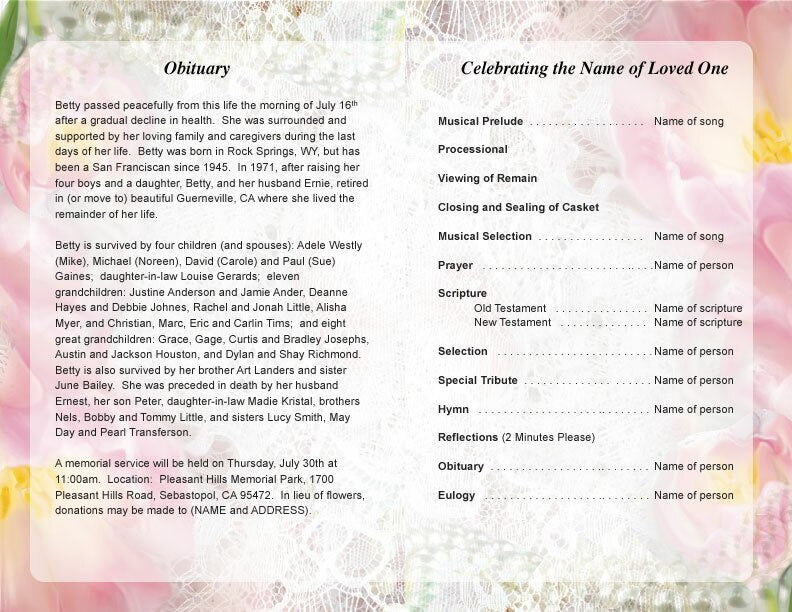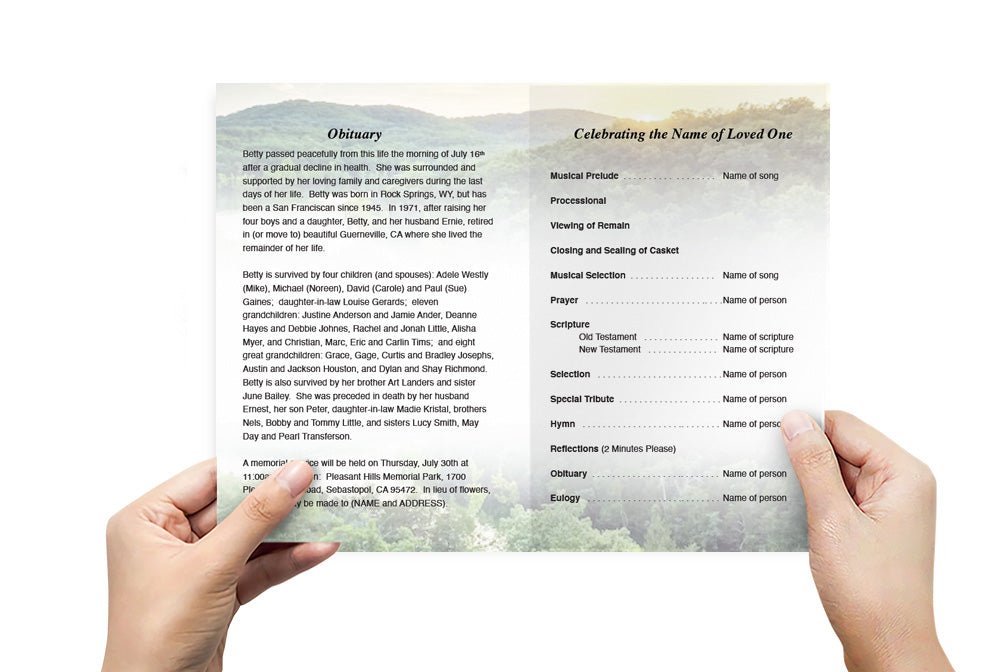The Biggest Errors Families Make When Designing Funeral Programs

Funeral programs play a vital role in memorial services by providing attendees with a structured guide to the ceremony and serving as a lasting keepsake for family and friends. However, in the emotional rush of planning a funeral, it’s easy to make mistakes that affect the quality and accuracy of these programs. These errors can lead to confusion, added stress, and even unnecessary expenses.
To help families avoid these pitfalls, this article outlines the biggest errors people make when designing funeral programs, along with practical tips for creating a polished and meaningful result. For professional templates that simplify the process, explore these funeral programs for quick and easy customization.
1. Misspelling Names and Titles
One of the most common and impactful mistakes is incorrect spelling of names, titles, or places. Errors in the name of the deceased or family members can be particularly distressing. To prevent this:
-
Confirm all spellings against official records.
-
Double-check titles like Reverend, Pastor, or Dr.
-
Ask multiple family members to review the text before printing.
2. Incorrect Dates and Times
Listing the wrong date of birth, date of passing, or service time is another frequent error. These inaccuracies can cause embarrassment or even disrupt the service if attendees show up at the wrong time. Always:
-
Verify all dates with official documents.
-
Review service details with the funeral director.
-
Print a proof copy before finalizing.
3. Poor Quality Photos
A photo is often the centerpiece of a funeral program, yet many families use low-resolution or grainy images that look unprofessional when printed. For the best results:
-
Use high-resolution photos (at least 300 dpi).
-
Choose well-lit, clear images that reflect the loved one’s personality.
-
Avoid cropped or pixelated pictures, especially for larger formats.
4. Overcrowding the Design
Trying to include too much information can make the program cluttered and hard to read. A well-balanced layout ensures elegance and clarity. Tips for clean design:
-
Use headings and subheadings to organize sections.
-
Leave enough white space for visual breathing room.
-
Limit fonts to two or three styles for consistency.
5. Skipping a Proofreading Process
Failing to proofread thoroughly can lead to embarrassing mistakes, such as typos or formatting issues. To avoid this:
-
Review the text multiple times.
-
Ask at least two other people to check for errors.
-
Read the program aloud to catch awkward phrasing.
6. Ignoring the Order of Service Structure
The order of service provides structure and flow for the ceremony. Omitting key elements or arranging them incorrectly can create confusion. A standard order typically includes:
-
Opening prayer or scripture
-
Musical selections
-
Eulogy
-
Tributes
-
Closing remarks and benediction
Consult with your officiant to ensure accuracy and proper sequencing.
7. Choosing the Wrong Paper Type
Paper quality affects both appearance and durability. Thin or flimsy paper can feel unprofessional and tear easily. For a polished look:
-
Use 80–100 lb. text paper or heavier cardstock for premium programs.
-
Choose matte for a classic finish or gloss for vibrant color printing.
-
Consider professional printing for a high-quality result.
8. Leaving Out Important Information
Forgetting to include essential details such as the service date, time, or location is surprisingly common. A complete program should have:
-
Full name of the deceased
-
Dates of birth and passing
-
Service details
-
Obituary or biography
-
A thank-you note to attendees
Including all necessary information ensures clarity for guests.
9. Failing to Account for Printing Time
Many families underestimate the time needed for printing, leading to last-minute stress. Whether printing at home or using a professional service:
-
Finalize the design early.
-
Schedule printing 24–48 hours in advance.
-
Order extra copies for unexpected guests or keepsakes.
10. Overlooking Digital Options
In an era of virtual memorials, forgetting to offer a digital version of the program limits accessibility for remote guests. To make your program available online:
-
Save it as a PDF for easy sharing.
-
Post on a memorial website or social media page.
-
Include a QR code in printed programs that links to the digital file.
This thoughtful step ensures inclusivity and convenience.
Tips for Avoiding Common Mistakes
-
Plan Ahead: Start early to allow time for review and corrections.
-
Use Templates: Pre-designed templates provide proper formatting and design consistency.
-
Proofread Carefully: Triple-check names, dates, and service details.
-
Choose Quality Printing: Invest in good paper and printing for a professional finish.
-
Provide Both Print and Digital Versions: Accommodate all guests, regardless of location.
For templates that make accuracy and elegance easy to achieve, explore these funeral programs, which offer customizable layouts for a variety of service styles.
Why Templates Are a Smart Choice
Templates take the guesswork out of design, ensuring a professional layout while saving time. Benefits include:
-
Easy customization for text and images.
-
Print-ready formatting for home or professional printing.
-
Coordinated designs for other stationery like prayer cards and bookmarks.
Using a template not only reduces stress but also minimizes the risk of errors, giving families confidence in the final result.
Why The Funeral Program Site Is Recommended
The Funeral Program Site is a trusted provider of templates and printing services for families nationwide. They offer:
-
Instant download templates for quick customization.
-
Professionally printed options for a polished finish.
-
Designs for bifold, trifold, and multi-page formats.
-
Matching sets for complete memorial stationery packages.
Their expertise ensures that families create beautiful, accurate programs even under tight deadlines.
Final Thoughts
Designing a funeral program is a deeply personal task that requires attention to detail. Avoiding common mistakes—such as spelling errors, poor-quality images, or incomplete information—ensures the program honors your loved one with care and respect. By planning ahead, proofreading thoroughly, and using professional templates, families can create a keepsake that combines accuracy and elegance.
If you’re looking for templates that make the process easier, explore customizable options like these funeral programs for a polished and stress-free result.
Author Bio
Christi Anderson is the founder of The Funeral Program Site, a leading provider of memorial stationery and design templates for over 20 years. She helps families create personalized tributes that combine elegance with simplicity. Discover her published resources on her Amazon Author Page.





























